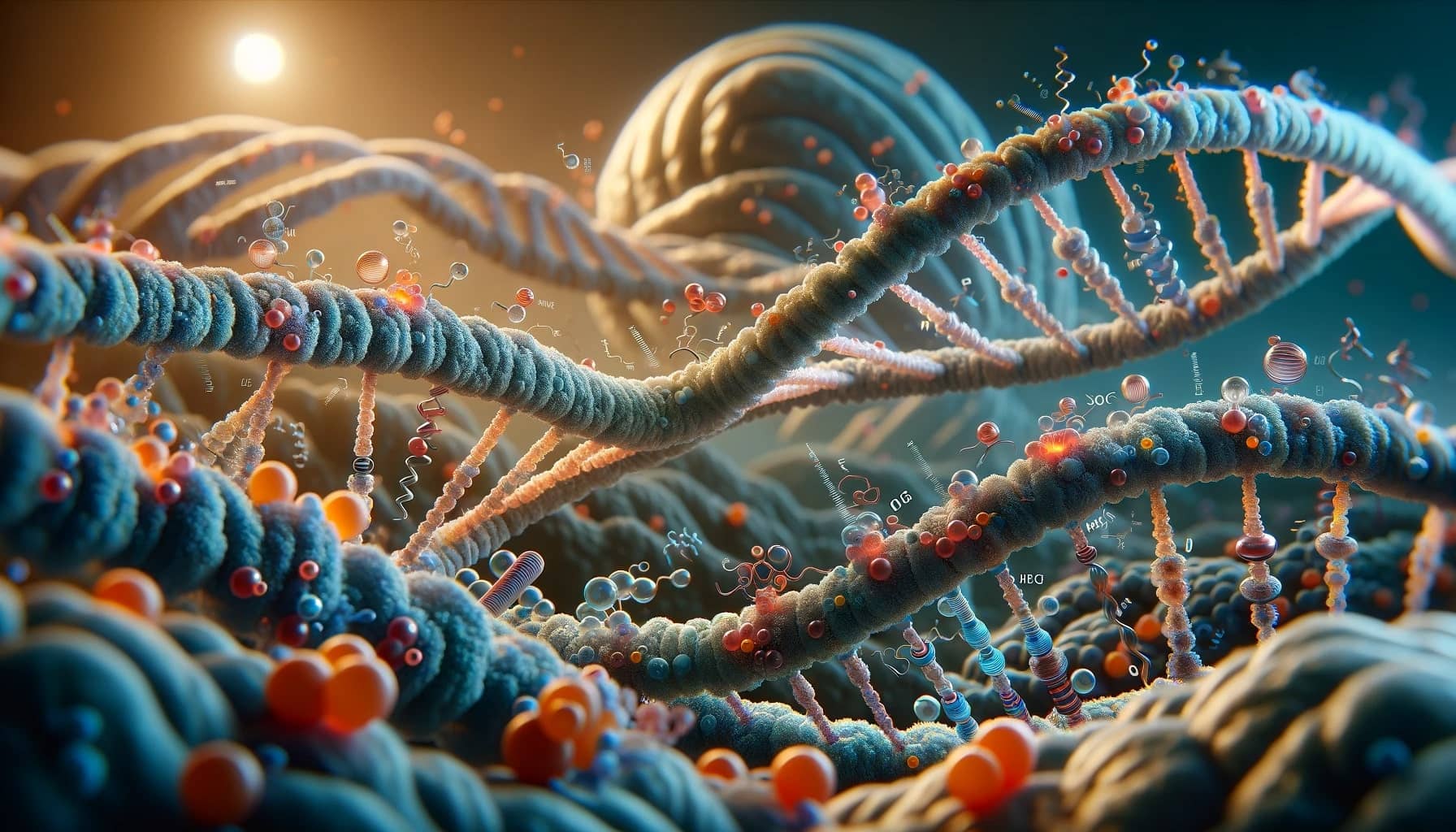
Rewriting the Aging Code: How Epigenetic Changes Affect Aging
As we learn more about aging, we’re finding out that it’s not just about our DNA sequence. There are other changes, called epigenetic alterations, that are really important. These changes can be reversed and they play a big role in aging and diseases like cancer, brain diseases, metabolic syndrome, and bone diseases. Epigenetic changes include things like DNA methylation (adding methyl groups to DNA), changes in histone proteins, how chromatin (DNA and protein complex) is arranged, and the role of non-coding RNAs (ncRNAs).
DNA Methylation: An Epigenetic Marker of Aging
DNA methylation, a major epigenetic change, can activate or deactivate genes. With aging, our DNA generally exhibits less methylation, though it increases in certain areas. “Epigenetic clocks” analyze DNA methylation to estimate someone’s age or health risks and to assess the effectiveness of anti-aging treatments. For example, treatments that regenerate the thymus can reduce people’s epigenetic age, potentially indicating a longer life.
Histone Modifications and Their Impact on Longevity
Histone modifications also play a crucial role. Histones, proteins around which DNA wraps, undergo changes that determine which genes activate. Studies have linked the loss of histones and changes in their modifications to aging. For instance, fruit flies with increased histones live longer, and certain histone modifications in human cells correlate with aging and reduced metabolic efficiency.
Chromatin Arrangement and Gene Activity
The arrangement of chromatin significantly impacts gene activity. Proteins like HP1a and Polycomb group proteins maintain DNA stability. Their alterations result in different chromatin structures in older cells.
The Emerging Role of Non-Coding RNAs in Aging
Non-coding RNAs, which control genes without producing proteins, are gaining prominence in aging research. This group includes long non-coding RNAs (lncRNAs), microRNAs (miRNAs), and circular RNAs. Studies have shown that changes in specific miRNAs can influence our lifespan and health, making them promising treatment targets.
Retrotransposons: A Genetic Wildcard in Aging
Aging also reactivates retrotransposons – DNA segments that can move and alter our genetic makeup. Targeting these with treatments like nucleoside reverse-transcriptase inhibitors might improve our longevity and health.
Epigenetic Noise and Gene Expression in Aging
Lastly, these epigenetic factors collectively influence gene function. As we age, gene expression experiences more random noise, leading to changes in mRNA production. Examining differences in young and old tissues provides better insights into these changes.
Conclusion: Epigenetics as a Pathway to Understanding Aging
In short, epigenetic changes are a big part of aging. They affect how our genes work and how our cells behave as we get older. As we learn more, we might be able to use this knowledge to slow down aging and treat age-related diseases.
